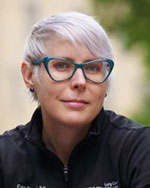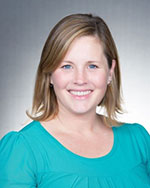Article:
Shankar M, Albert T, Yee N, Overland M. Approaches for Residents to Address Problematic Patient Behavior: Before, During, and After the Clinical Encounter. J Grad Med Educ. 2019 Aug;11(4):371-374. doi: 10.4300/JGME-D-19-00075.1. PubMed PMID: 31440327; PubMed Central PMCID: PMC6699523.
Summary:
Microaggressions are subtle, stunning, often automatic and non-verbal exchanges which are common in the workplace. They are more commonly experienced by physicians from groups who are underrepresented in medicine and are generally degrading to physician health and well-being. This article focused on microaggressions common to the patient-trainee interaction and proposed a three-pronged approach which allows faculty to address microaggressions before, during, and after a patient encounter. For this blog post, Erin Narewski interviewed senior author Maryann Overland.
Interview:
EN: What caused your research team to focus on microaggressions? Why are they important for medical education?
MO: Like most research questions, the need for scholarship around mitigating bias in the workplace for our medical trainees was borne out of years of personal experience. Time and again I witnessed female trainees and trainees who are underrepresented in medicine be the targets of intentional and unintentional bias, both from patients and colleagues. After stumbling through my own responses to these situations, I brought my concerns to a group of colleagues who shared my sense that we lacked language and training on how to mitigate bias against the learners we are meant to protect.
The idea of proceduralizing an interaction around bias came from the realization that we are often caught in a fight-flight-or-freeze reaction when bias occurs, not unlike the initial moment after a code blue is called. In a code blue, however, we carry a pocket card to guide us through the necessary decisions when our sympathetic nervous system is on overdrive.
Patients do better when their doctors are a part of their community. As the medical workforce becomes more diverse and inclusive, the training environment and workplace must change as well. It's all well and good to work toward recruiting a more diverse medical workforce, reflective of the communities we serve. However, we also must make sure the learning and working environment is safe, equitable, and inclusive of everyone involved.
EN: Are microaggressions damaging to patients as well as to physicians?
MO: Yes, extremely. Although this article is about patient mistreatment of trainees, patients are much more likely to be the victims of microaggressions than the other way around. Additionally, when the patient is the one mistreating their provider, the patient's care also suffers. While physicians are sworn to uphold an oath of beneficence and non-malfeasance, we are also human and may consciously or unconsciously treat patients differently if we are finding the interactions with them to be unpleasant, demeaning, or abusive. We might avoid them. We might listen less and talk more. We might shorten our interactions. We might make different recommendations that are less than standard-of-care. Having language to address microaggressions in a way that still maintains the physician-patient relationship is crucial.
EN: Have you personally used the approach to patient microaggressions described in your work? How did it change your clinical interactions with your patients, and how did it change the way you felt about those interactions?
MO: Absolutely. I use the techniques and script described here on a regular basis. With individual patients, having language to quickly redirect conversations that are heading in a potentially damaging direction can be extremely powerful in maintaining the integrity of our visits and relationship. "I think you are trying to compliment me, but I'd prefer to focus on your health," or, "I don't think we're going to agree about that, but we can agree that your health is important to both of us" are quick phrases that I have at the ready. Being able to set these boundaries has only improved my relationship with my patients - it prevents comments and situations that might pass the point of no return in terms of damaging our relationship.
EN: What changes have you noticed in your team when you use these strategies on rounds?
MO: When working with trainees, I now make it my practice to address the creation of a positive clinical learning environment right off the bat. Included in this is learning about who my trainees are as people - what is important to them, who they are outside the clinical environment, and who is important to them. We also have explicit conversations about how we might handle microaggressions and mistreatment if they occur. Trainees are provided a safe space to reflect on their own boundaries and communication styles.
What I have witnessed over the past few years is more preventive action on the part of the team. This way, interactions with patients that are potentially leading toward abuse or microaggressions are recognized more quickly and mitigated with a few phrases. When episodes of mistreatment do occur, teams are more apt to debrief them right away, offer support, and move forward, making it less likely for episodes of mistreatment to lead to lasting moral distress.
EN: Your article mentions a formal curriculum for residents including implicit bias training, communication skills, and role-playing. Have you had experience with the Theatre of the Oppressed, and is that the model you use for role-playing?
MO: I have not used Theatre of the Oppressed as a model for training, but it is a compelling idea! Our training is based on reflective practice. We start with reflecting for action - individual reflection on our own boundaries, starting with a list of patient behaviors and having each individual rate how acceptable or unacceptable those behaviors are. They share their boundaries in small groups. We then discuss ways we can set the stage for a safe learning environment for everyone. When and where should these conversations happen? Who is responsible for getting these started?
Next, we discuss ways we might respond to boundaries being crossed - including mild, moderate, and severe, understanding that those boundaries will be different for each trainee. After the small groups have created a list of responses, we provide a script, or menu, of possible ways to respond in the moment and have everyone practice the words until they feel less awkward (reflecting in action). Finally, we discuss the importance of a debrief (reflecting on action) - how, when, and who.
EN: Debriefing is crucial when your team has encountered an inappropriate patient on rounds. How do you debrief appropriately in a short period of time, while taking into account the emotions of your team?
MO: It is important to acknowledge any mistreatment of trainees right away. Ignoring these moments can feel like gas-lighting to the target of the mistreatment, and lead to an unsafe clinical learning environment for people who are already feeling like they have to work harder than their peers to be included in the community. However, a major debrief in the middle of rounds is not practical or emotionally safe. I prefer to take a moment to acknowledge that something has happened, see if anyone needs to take a break, and set a time in the nearly-immediate future (right after rounds) to debrief. Debriefs don't have to be exhaustive, but should include acknowledging that mistreatment happened, checking in on the emotional state of everyone involved, reflecting on how the team or individual handled it in that moment, and discussing how we can do better next time.

Blog post author
Erin Narewski, DO, FCCP is an Assistant Professor of Medicine at The Lewis Katz School of Medicine at Temple University, where she serves as the Associate Program Director for Resident Development for the Temple Hospital Internal Medicine Residency Program. Her interests include Medical Education and Interstitial Lung Disease. Outside of the hospital, she is an amateur paleontologist, a poor electric guitarist, and a fervid lover of great literature.
Twitter handle: @ErinNarewski

Article author
Maryann Overland, MD is a primary care internist at the VA Puget Sound in Seattle, WA, and the Associate Program Director for Primary Care for the University of Washington Internal Medicine Residency Program. Her academic interests include teaching and studying patient-centered communication, mitigating bias for patients and trainees in medicine, and innovations in primary care training. She strives to improve diversity, equity, and inclusion in the primary care workforce. She enjoys singing, hiking, coaching youth soccer, and spending time with her family and pets.
Twitter handle: @marnemoon



